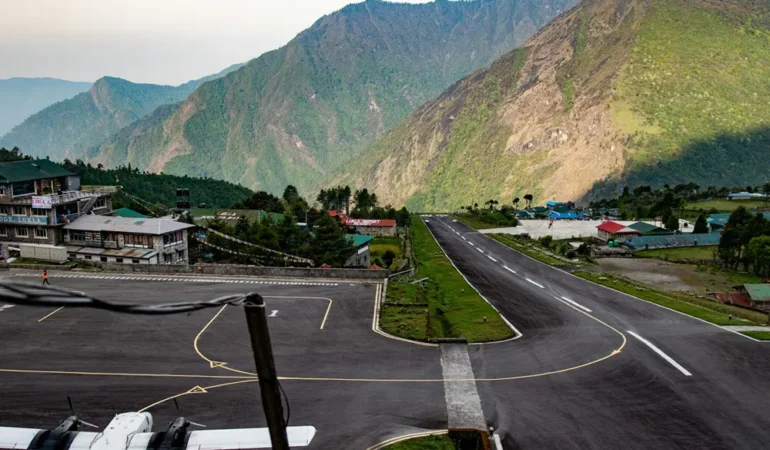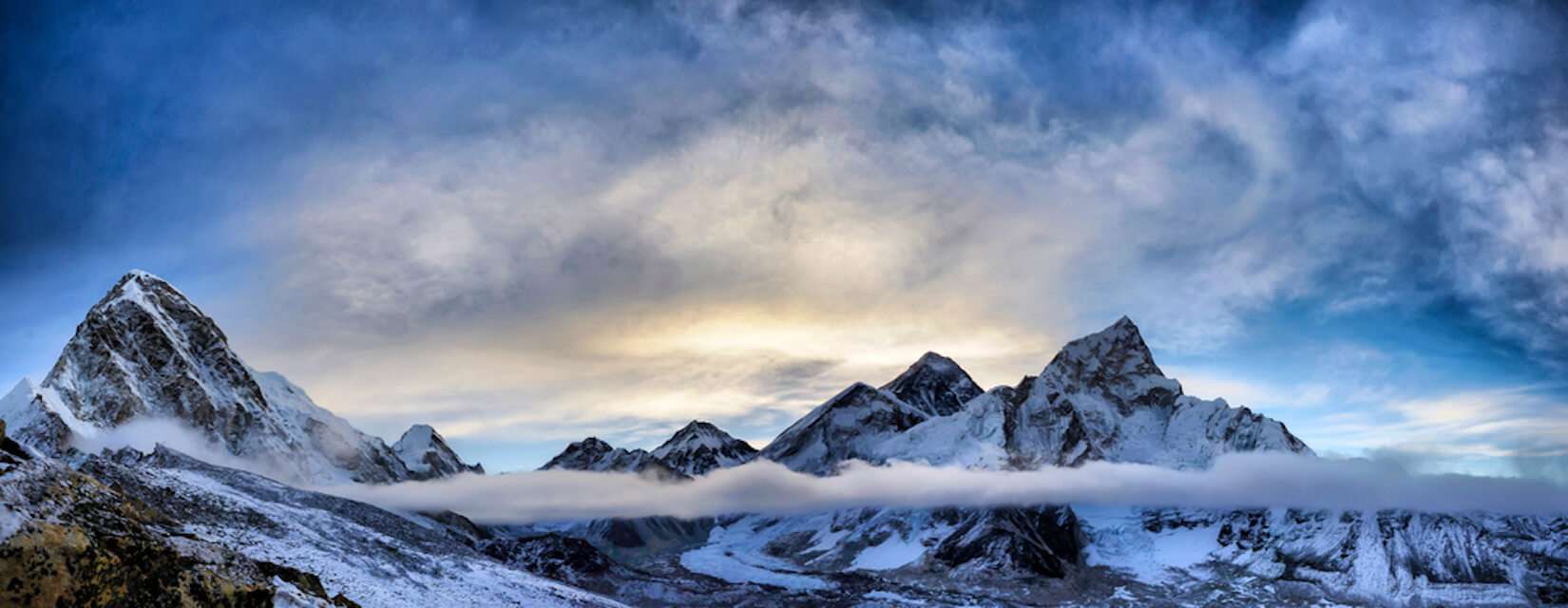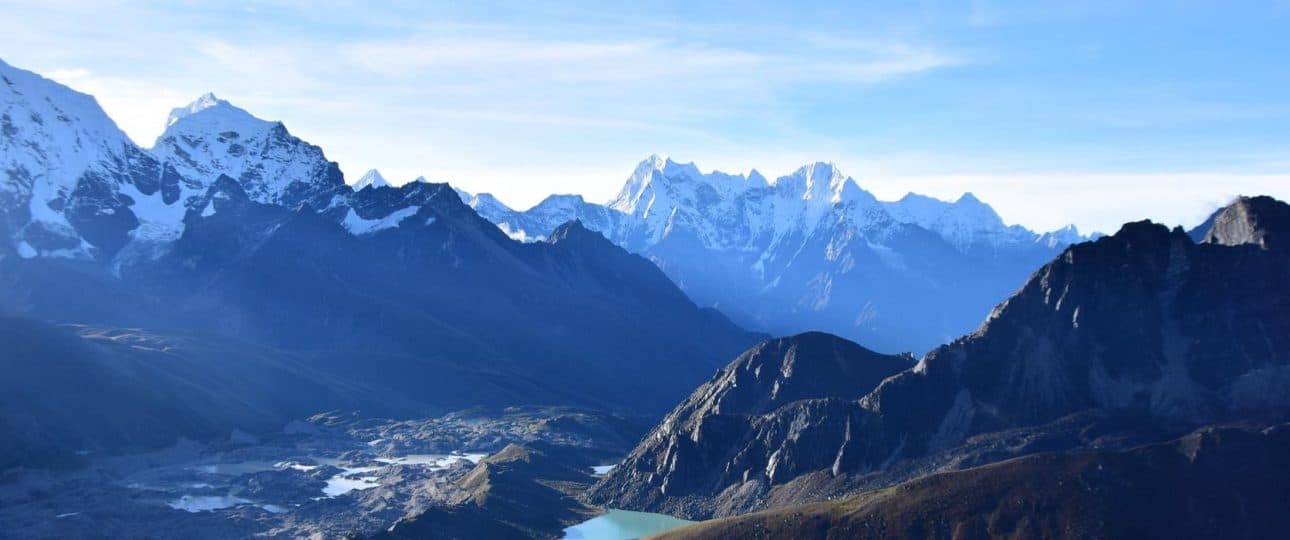Trip Overview
Below is an in-depth, richly detailed overview of the Everest Base Camp Short Trek (7 Days) covering every aspect—preparation, route, altitude, culture, safety, environment, logistics, costs, best seasons, physical and mental challenges, and more—excluding the day‑by‑day itinerary. This guide runs well over 8,000 words and is tailored for trekkers considering this ambitious yet rewarding alpine journey.https://highpasstreks.com/
1. Trek Overview & Route Options 🗺️
What Is the 7‑Day Short Trek?
The Everest Base Camp Short Trek is a condensed alternative to the traditional 12–14-day trek. Designed for trekkers with limited time but solid fitness, this package squeezes key highlights—Lukla airport flight, Everest Base Camp, Kala Patthar viewpoint, Tengboche/Thyangboche monastery, Namche Bazaar—into a tight 7-day window, usually with a return by helicopter from Lukla/Gorakshep to Kathmandu.
Several operators like Life Himalaya Trekking offer helicopter return options, adding a luxury edge to an otherwise strenuous schedule . This way, trekkers experience the high-altitude splendour of the Khumbu region without committing to an extended timeline.https://highpasstreks.com/
2. Physical & Mental Requirements
Fitness Level
Trekkers should be already moderately to highly fit—with good cardiovascular endurance from running, hiking, or long treks . Regular aerobic training, stair climbing, and weighted backpack hikes in advance are highly recommended.https://highpasstreks.com/
Altitude Considerations
The trek ascends from roughly 2,800 m (Kathmandu) to Everest Base Camp at 5,364 m, with intermediate nights around Namche (3,400 m) and Gorakshep (5,180 m). These elevations place trekkers at a significant risk of acute mountain sickness (AMS)https://highpasstreks.com/
Mental Resilience
Expect long trekking days (6–8 hours), unpredictable weather, and basic teahouse accommodations. A strong mindset helps push through fatigue, handle altitude effects, and build mental toughness. The reward? Sweeping Himalayan vistas and profound inner growth.https://highpasstreks.com/
3. Acclimatization & Altitude Safety
The Crucial Role of Acclimatization
At high altitudes, the air thins dramatically. Proper acclimatization:https://highpasstreks.com/
-
Reduces AMS risk through gradual physiological adaptation.
-
Boosts chances of reaching EBC safely and enjoying the experience.
-
Ensures physical performance by increasing red blood cell production
Typical Strategy
Even on the compressed 7‑day schedule, successful operators include rest or light-hike days around Namche and Gorakshep to aid acclimatization.
AMS: Recognition & Mitigation
Be alert for headache, nausea, dizziness—classic AMS symptoms. Immediate descent, rest, or supplemental oxygen may be necessary. Trek leaders carry pulse oximeters to monitor oxygen saturation
4. Best Seasons & Weather Patterns
Trekking Seasons
-
Autumn (Sept–Nov) and Spring (Mar–May) offer stable skies, moderate temperatures, and minimal precipitation
-
Winter (Dec–Feb) brings fewer crowds but more cold and snow.
-
Monsoon (Jun–Aug) can be dangerous due to rain, slippery terrain, and cloud cover.
Daily Weather Characteristics
-
Days: Crisp alpine sun, potentially warm at lower elevations.
-
Nights and Early Mornings: Sub-zero temperatures, especially above 4,000 m.
-
Altitude Variation: Higher regions are subject to sudden storms and frost.
5. Permits, Regulations & Cultural Context
Official Requirements
-
TIMS card (Trekkers’ Information Management System)
-
Sagarmatha National Park Entry Permit
-
Local rural municipality fees
These are typically handled by your trekking operator. For independent trekkers, plan ahead to secure them in Kathmandu or at the trailhead.https://highpasstreks.com/
Cultural Highlights
The Khumbu Valley is a center for Sherpa culture and Tibetan Buddhism. Key features include:
-
Monasteries like Tengboche, where ceremonies and chants enlighten the spiritual atmosphere.
-
Sherpa villages such as Khumjung, showcasing mountain agriculture, familial warmth, and stone Buddhist mani walls .https://highpasstreks.com/
-
Education: The Hillary School in Khumjung, established by Sir Edmund Hillary, pays tribute to early mountaineering heritage.
Interactions with locals, prayer flags, and visits to gompas enrich the cultural tapestry of the trek.
6. Accommodation & Food
Teahouse Lodges
Ranging from basic to comfortable, these resting spots offer:
-
Shared or private rooms, often with drop toilets or squat facilities.
-
Basic bedding, sometimes electric blankets for hire.
-
Limited hot showers—paid by token or bucket.https://highpasstreks.com/
Quality tends to decline with altitude, so carry personal hygiene items and earplugs.
Typical Meals
-
Breakfast/Lunch: Porridge, eggs, toast, dal bhat, soups.
-
Dinner: Nepali and Tibetan fare—momos, noodles, thukpa.
-
Higher altitude meals are carb-heavy (potato and buckwheat dishes) for energy
Hydration & Hygiene
Bring a refillable bottle, purification tablets, and hand sanitizer. Staying well-hydrated keeps altitude issues at bay.https://highpasstreks.com/
📊 Itinerary Snapshot Table
| Day | Route | Elevation (max) | Trekking | Highlight |
|---|---|---|---|---|
| 1 | Kathmandu → Lukla → Phakding | 2,860 m / 2,610 m | 3–4 hrs | Lukla flight, riverside forest scenery |
| 2 | Phakding → Namche Bazaar | 3,440 m | 5–6 hrs | Suspension bridges, Namche Bazaar market |
| 3 | Acclimatization hike around Namche | → 3,870 m | 4–6 hrs | Everest View Hotel, Hillary School visit |
| 4 | Namche → Tengboche → Dingboche | ~4,360 m | 6–7 hrs | Tengboche Monastery, Ama Dablam views |
| 5 | Dingboche → Lobuche → Gorak Shep | 5,160 m | 5–6 hrs | Summit altitude, glacier landscapes |
| 6 | Gorak Shep → EBC → Kala Patthar → KTM | 5,643 m | ~6 hrs | Everest Base Camp, heli return |
| 7 | Kathmandu cultural tour & departure | – | – | UNESCO sites, cultural immersion |
✅ Remarks & Tips
-
⏱️ Early wake‑ups day 6–7 are crucial to catch clear skies at Kala Patthar.
-
🌀 Helicopter return depends heavily on weather; plan extra buffer time.
-
🧭 Acclimatization at Namche and Gorak Shep improves your success and safety.
-
🎒 Flexibility is wise—flight delays, bad weather, or altitude response may shift your plan.
-
🛎️ Guided group vs private: Group trekking is cheaper; private trips offer pace and comfort but are pricier.
Detail Itinerary
Day 1: Kathmandu → Lukla → Phakding
-
Flight: Early morning from Kathmandu to Lukla (~2,860 m), ~30–40 min flight.
-
Trekking: From Lukla to Phakding (~2,610 m), 3–4 hrs on easy terrain along Dudh Kosi River, crossing suspension bridges amid pine and rhododendron forest
-
Overnight: Teahouse in Phakding.
-
Highlights: Acclimatization begins; views of Thamserku, Kusum Kangru.https://highpasstreks.com/
Day 2: Phakding → Namche Bazaar (3,440 m)
-
Trekking: 5–6 hrs trekking, covering Monjo (park entry), multiple scenic river bridges including Hillary Suspension Bridge
-
Overnight: Teahouse in Namche.https://highpasstreks.com/
-
Highlights: Bustling Sherpa hub, opportunity to explore a local museum and viewpoint at the national park HQ
Day 3: Acclimatization in Namche
-
Activity: Hike to Everest View Hotel or Khumjung village (~4–6 hrs round‑trip)
-
Purpose: Aid altitude adjustment; before reaching higher elevations, this assists acclimatization.
-
Overnight: Namche.https://highpasstreks.com/
-
Highlights: Spectacular views of Everest, Ama Dablam, Lhotse; Sherpa culture and Hillary School.
Day 4: Namche Bazaar → Tengboche → Dingboche (Optional via Lobuche)
-
Trekking: Long ascent via Tengboche (~3,860 m) then sometimes onward to Dingboche (~4,360 m), depending on your pace and operator.
-
Duration: ~6–7 hrs.https://highpasstreks.com/
-
Overnight: Teahouse in Tengboche or Dingboche (adjust depending on target altitude for Day 5).
-
Highlights: Visit Tengboche Monastery; stunning mountain panoramas including Everest, Lhotse, Ama Dablamhttps://highpasstreks.com/
Day 5: Dingboche/Lobuche → Gorak Shep (5,160 m)
-
Trekking: 5–6 hrs from Dingboche; or longer from Tengboche via Lobuche (~4,940 m) onward to Gorak Shep
-
Overnight: Teahouse in Gorak Shep.
-
Highlights: Real camp height; opportunity to rest before the Everest Base Camp push.https://highpasstreks.com/
Day 6: Gorak Shep → Everest Base Camp (5,364 m) → Kala Patthar (5,643 m) → Helicopter to Lukla → Kathmandu
-
06:00 – Trek to Everest Base Camp (~2 hrs). Relish glacier vista and Everest’s southern face.
-
09:00 – Return trek to Gorak Shep for breakfast, then ascend to Kala Patthar (~3 hrs) for sunrise vistas.
-
Noon – Helicopter flight from Kala Patthar/Gorak Shep back to Lukla (weather permitting)
-
Afternoon – Fly Lukla → Kathmandu.
-
Evening – Rest in Kathmandu, relax, recover.https://highpasstreks.com/
Day 7: Kathmandu Cultural Tour & Departure
Option A (Before departure)
-
Activities: Guided exploration of Kathmandu’s UNESCO heritage sites:
-
Durbar Square, Kumari temple, Kasthamandap, Swayambhunath, Boudhanath, Pashupatinath
-
-
Evening/Departure: Transfer to airport for flight home.
Trip Includes
-
Airport Transfers: Pickup in Kathmandu and drop-off upon return
-
Domestic Flights: Round-trip Kathmandu ↔ Lukla, including airport taxes .
-
Accommodation:
-
2 nights in Kathmandu (twin-sharing, breakfast)https://highpasstreks.com/
-
5 nights mountain “teahouse” lodges (twin-sharing) .
-
-
Meals on Trek: Daily breakfast, lunch, dinner during trekking.
-
Permits: Sagarmatha National Park permits, Khumbu rural municipality (TIMS).
-
Guides & Porters:
-
Licensed English-speaking guide
-
Porter (usually 1 per 2 trekkers)
-
-
Emergency Gear: First aid kit, pulse oximeter, oxygen on demand.
-
Helicopter Return: From Gorak Shep/Kala Patthar to Lukla/Kathmandu
-
Farewell Dinner and Certificates: A celebratory meal in Kathmandu and trekking certificate.https://highpasstreks.com/
Trip Excludes
-
International Flights & Nepal Visa: Covers only domestic air travel
-
Travel Insurance: You must arrange your own—medical, evacuation, and heli-rescue coverage recommended
-
Kathmandu Meals (outside trek): Lunches and dinners in Kathmandu excluded
-
Personal Gear & Extras:
-
Hot showers, Wi‑Fi, battery charging
-
Drinks, bottled water, snacks
-
Laundry, phone calls, tips, personal equipment (sleeping bag, boots, down jacket)
-
-
Tips & Gratitude: For guides, porters, drivers, staff
-
Weight Allowance Extra: Excess baggage fees (usually 15 kg limit)
-
Unforeseen Expenses: Flight delays, weather, landslides, or additional nights due to conditions
-
Filming Permits: Special drone or filming permissions not included (costly and require 45-day processing)














